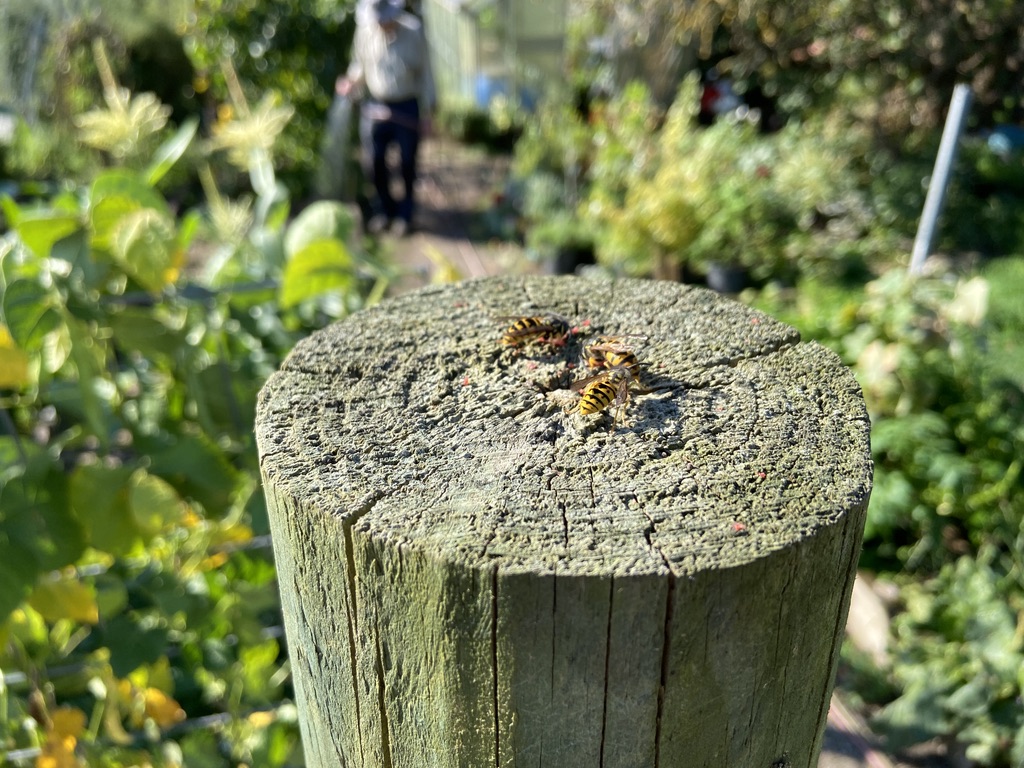I know that we have reached the end of the warmer season here in Victoria, but that doesn’t mean the European Wasps have gone away! If you don’t know how to locate a European Wasp nest, it can be time-consuming but once you know what to look for you will get better and better at finding them.
What are European Wasps?
European wasps are an introduced species to Australia and therefore have no natural predators to help keep numbers low. They are roughly the same size as honey bees, but the yellow is brighter on the wasp. They are smooth bodied, with black antennae and yellow legs.
European wasps are predators in their own right, as well as scavengers. This means they eat insects, dead animals, fruit, and sugary drinks. They will often be attracted to food that has been left out, as well as animal food such as dog or cat food in bowls. They may also be attracted to uncovered rubbish bins, compost, and food scraps that have fallen to the ground.
European wasps have a painful sting that they can utilise repeatedly. They will release a pheromone that calls other wasps of the same nest to that area to help repel the perceived invader, and protect the queen and nest.
The nest is often located in the ground, or cavities in walls, ceilings or in trees. It is not usually very visible, with only a small entrance hole indicating it’s position.
How to locate a European Wasp nest
- First set up a dish or lid with a small amount of meat in it within the area you are finding the wasps. Set this somewhere visible so you can see the wasps coming to it.

- The wasps will find the meat and take it back to the nest. They will then communicate to other wasps in the nest the whereabouts of the food, who will also come out and find it.
- This creates a steady stream of wasps flying to and from the nest. You can then follow this stream of insects back directly to locate the European wasp nest.
- If you are needing to go through a vegetative area, it can be useful to take spot paint with you. Use this to make on the ground the direction you need to go.

- Once you have located the nest, do not go too close to it, or walk within the stream of insects flying in and out. This could aggravate them and provoke them to attack. Use the spot paint to mark nearby so it is easily identifiable, and leave it until after dark.

How to treat a European wasp nest
- After dark, use a torch with a red rather than white light – wasps can’t see red light so shining it on the nest won’t disturb them. If you want to take extra safety precautions, try to completely cover up. If you have a bee suit this is ideal, however long sleeves, gloves and a hat with a net will also suffice.
- Use whatever method you have decided is best for you to kill the wasps. We usually use a powder and dump this liberally in and around the nest opening. Any wasp that touches this will die within 24 hours. Wasps approaching the nest entrance will also walk it into the nest, thus spreading it to the rest of the colony including the queen.

Wasp nests treated in this way with the correct pesticides should die off within 24 hours. It is important to ensure that you use a chemical that is registered specifically for this purpose, and follow all instructions carefully.
Remember that whilst males cannot survive winter, the queens are capable of hibernating. Once the weather starts to warm up again, they will lay eggs and begin a new nest, starting the cycle over. The earlier in the season you can locate and destroy nests, the less queens will survive to create new colonies.
Good luck with your wasp nest hunting and eradication, and happy farming! Please get in touch if you’d like to speak to our agricultural consultant to learn more or arrange some training.
Chris

